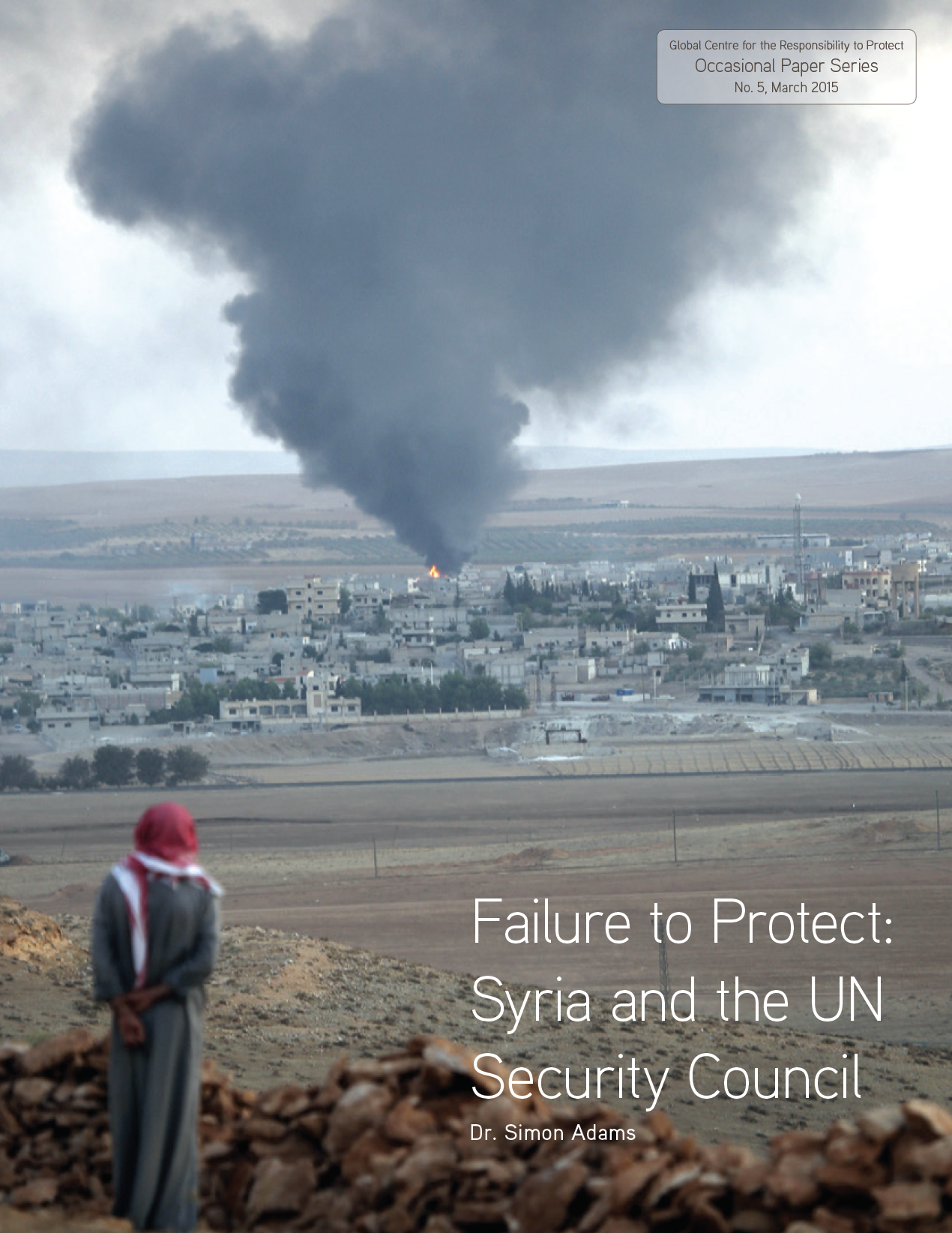
Failure to Protect: Syria and the UN Security Council
After four deadly years the Syrian conflict shows no sign of abating. As the civil war has dragged on its violence has become more widespread, systematic and extreme. The conflict has also become more intractable, threatening the peace and stability of the entire Middle East. It has already had devastating consequences for neighboring Iraq and poses an enduring threat to Lebanon, Jordan and Turkey.
The Responsibility to Protect (R2P), the global commitment adopted at the 2005 United Nations (UN) World Summit, has been central to the international discourse on how to respond to mass atrocity crimes in Syria. Despite the acrimonious debate surrounding the UN Security Council-mandated intervention in Libya in 2011, individual states, regional organizations and UN agencies have struggled to find ways and means of upholding their responsibility to protect the people of Syria. Public censure of atrocities committed by both government forces and armed opposition groups, as well as bilateral sanctions, investigations by the UN Human Rights Council and a Joint Monitoring Mission deployed during the failed 2012 ceasefire, stand as examples of international efforts to confront atrocities in Syria. But it has not been enough.
The Responsibility to Protect is an international norm, but it does not possess independent agency. The failure to end atrocities and protect civilians in Syria is not a failure of R2P, but of the imperfect actors and institutions charged with its implementation. Beyond the primary responsibility of the Syrian government to stop killing its own people, responsibility rests with the one body entrusted and mandated by the 193 members of the United Nations with the maintenance of international peace and security – the Security Council.
Despite resolutions that led to the destruction of Syria’s chemical weapons stockpile and improved access to the 12.2 million suffering Syrian civilians who remain in desperate need of humanitarian assistance, political divisions and partisan interests within the Security Council have been an insurmountable obstacle. In particular, Russia and China have on four separate occasions employed their vetoes to block action in response to mass atrocity crimes in Syria, including on a May 2014 draft resolution that would have referred the Syrian situation to the International Criminal Court. As this paper shows, each veto strengthened impunity and encouraged the expansion of war crimes and crimes against humanity.
This occasional paper from the Global Centre for the Responsibility to Protect analyzes the Security Council’s response to Syria through the conflict’s various phases and argues that without an agreement by the Permanent Members of the Council to refrain from using their veto in future mass atrocity situations, the legitimacy and efficacy of the Council will be increasingly called into question. This is a failure that the Security Council, Syria and the world can ill afford.
Download PDF Version:
Related Content


Populations at Risk, July 2025

